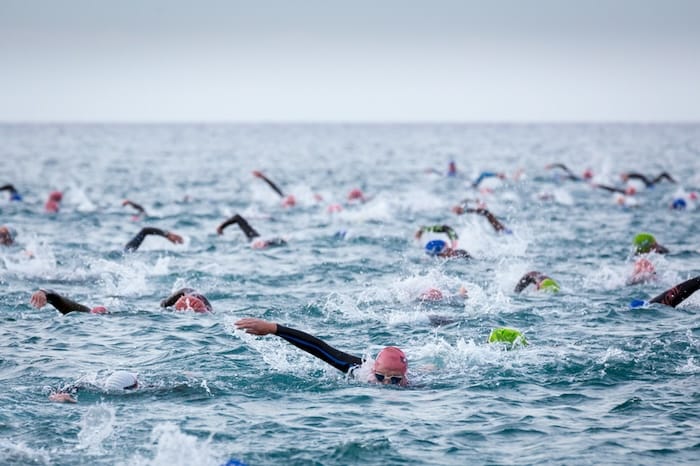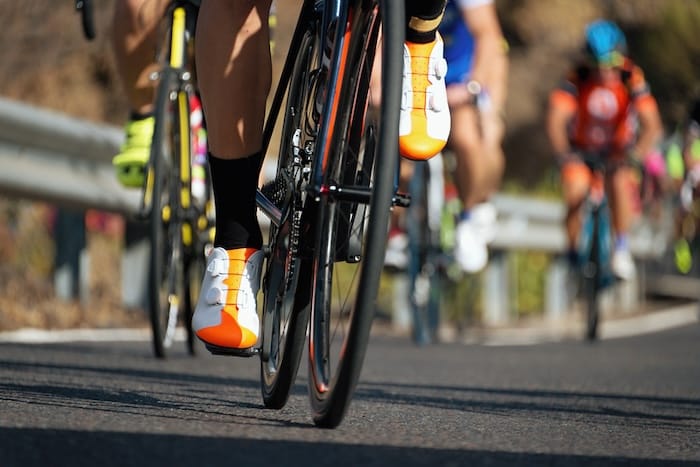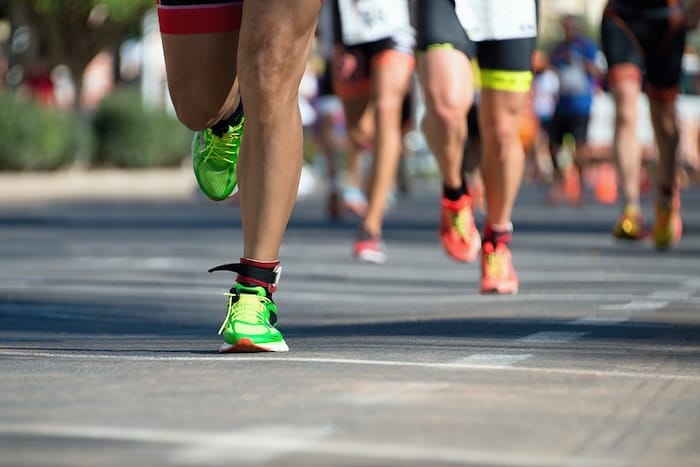- Calls to this hotline are currently being directed to Within Health, Fay or Eating Disorder Solutions
- Representatives are standing by 24/7 to help answer your questions
- All calls are confidential and HIPAA compliant
- There is no obligation or cost to call
- Eating Disorder Hope does not receive any commissions or fees dependent upon which provider you select
- Additional treatment providers are located on our directory or samhsa.gov
Triathletes & Cyclists’ Vulnerability to Eating Disorders
A recent study reveals triathletes and cyclists are significantly more vulnerable to developing an eating disorder (ED) than the general population [1]. While more research is still required on the subject, this study suggests eating disorders pose a significant threat to adult athletes. Therefore, ED screening and awareness among adult athlete populations should become a priority.

Eating Disorders and Athletes
While much focus has been placed on the increased risks and prevalence of eating disorders among adolescent females and young women, recent research has revealed another high-risk population: athletes. Studies reveal that the prevalence of EDs among athletes is significantly higher than the general population, with up to 19 percent of male athletes and up to 45 percent of female athletes exhibiting disordered eating and/or being diagnosed with an eating disorder [2].
When compared with the general population’s eating disorder prevalence rate of 3.8 percent for females and 1.5 percent for males [3], it is evident that both male and female athletes are at a significantly higher risk of developing an ED than non-athletes.
The seriousness of eating disorders and potential medical complications that can arise (especially among individuals involved in athletic activities), makes it clear that more education and research is needed to help practitioners better detect eating disorder symptoms and uncover specific risk factors for EDs among athletes.
To this end, a recent study published in the Journal of Eating Disorders focused on the prevalence of and specific risk factors for eating disorders among triathletes and cyclists [4].

Triathletes & Cyclists Are Vulnerable to Eating Disorders
Conducted by researchers from the University of Granada in Granada, Spain, the study involved 4037 triathletes and cyclists from across Spain. All participants were over eighteen years of age. The goal of the study was twofold: to characterize eating disorders in a specific group of athletes, and to determine whether factors like age, sex, body mass, and sport discipline (triathlon vs. cycling) increased an athlete’s risk of developing an ED.
Participants self-reported their demographic characteristics like age, gender, weight, and height, then completed a series of questionnaires to measure their eating habits [5].
The study revealed the following findings:
- 17.9 percent of cyclists and triathletes demonstrated an increased risk of suffering from an ED.
- Male triathletes and cyclists were significantly less likely to suffer from an
- ED than their female counterparts.
- Triathletes and cyclists with a higher body mass index (BMI) were more likely to have an eating disorder.
- Younger triathletes and cyclists were more likely to suffer from an ED.
Triathletes were less likely to have an ED than cyclists.
While the study suggests variables like age, sex, and BMI all predict risk factors for ED among athletes, the researchers were surprised to find that sport discipline was also a risk factor for developing ED. The study authors note that, to their knowledge, this is the first study that suggests athletes of specific sport disciplines (in this case, cyclists and triathletes) might have an increased risk of ED, regardless of their age, sex, and BMI [6].

They cite several possible risk factors for ED among cyclists and triathletes, including social or cultural pressures to conform to a certain body shape, the pressure to achieve leanness/low BMI in order to improve sports performance, and adherence to strict dieting habits, all of which have been shown to independently increase the risk of developing an ED.
While ED specialists and researchers often focus more attention on females and adolescents, this study on triathletes and cyclists’ vulnerability to eating disorders suggests eating disorders also pose a significant threat to adult athletes.
Given the severity of eating disorders and the potentially devastating effects they can have on an athlete’s health, performance, and quality of life, it is critical for practitioners to prioritize eating disorder awareness and screening among adult athlete populations.
Resources:
[1] Muros, J.J., Ávila-Alche, Á., Knox, E. et al. Likelihood of suffering from an eating disorder in a sample of Spanish cyclists and triathletes. J Eat Disord 8, 70 (2020). https://doi.org/10.1186/s40337-020-00350-z [2] Eating disorders in athletes: Overview of prevalence, risk factors and recommendations for prevention and treatment. Taylor & Francis. https://www.tandfonline.com/doi/abs/10.1080/17461391.2012.740504. [3] U.S. Department of Health and Human Services. Eating Disorders. National Institute of Mental Health. https://www.nimh.nih.gov/health/statistics/eating-disorders.shtml. [4] Muros, J.J., Ávila-Alche, Á., Knox, E. et al. Likelihood of suffering from an eating disorder in a sample of Spanish cyclists and triathletes. J Eat Disord 8, 70 (2020). https://doi.org/10.1186/s40337-020-00350-z [5] ibid. [6] ibid.About the Author:

Sarah Musick is a freelance writer who specializes in eating disorder awareness and education. After battling with a 4-years long eating disorder, she made it her mission to help others find hope and healing in recovery.
Her work has been featured on numerous eating disorder blogs and websites. When she’s not writing, Sarah is off traveling the world with her husband.
The opinions and views of our guest contributors are shared to provide a broad perspective on eating disorders. These are not necessarily the views of Eating Disorder Hope, but an effort to offer a discussion of various issues by different concerned individuals.
We at Eating Disorder Hope understand that eating disorders result from a combination of environmental and genetic factors. If you or a loved one are suffering from an eating disorder, please know that there is hope for you, and seek immediate professional help.
Published December 16, 2020, on EatingDisorderHope.com
Reviewed & Approved on December 16, 2020, by Jacquelyn Ekern MS, LPC

